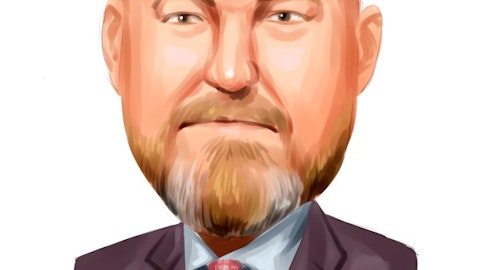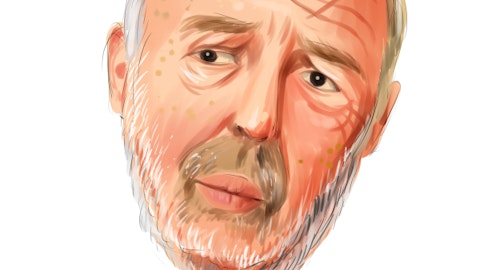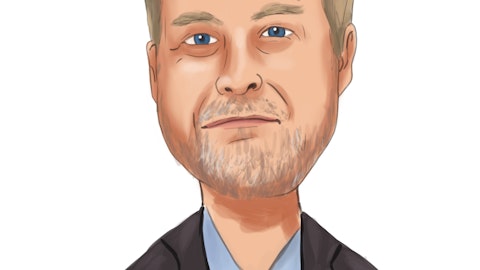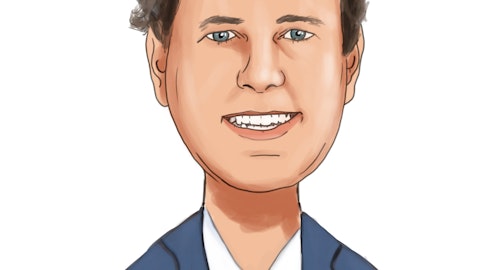Yuri Fernandes: Thank you, Pablo. So basically cost in ’24 inflation like? And just the first Q, coming back to this, because I think you mentioned CLP22 billion on one-off kind of like onetime events. Isn’t this like anticipating expenses for ’23? Sorry, ’24 and ’23?
Pablo Mejia: Well, for example, the expenses for the contract, the bonus for the unions, it’s accrued on a monthly basis. So if we sign off on earlier, we have to pass that through income, all the months have to come due. So it’s — for example, that would be something that’s not accrued. It would be a double accrual.
Yuri Fernandes: Perfect. Thank you very much, Pablo.
Pablo Mejia: You’re welcome.
Operator: Thank you very much. Our next question comes from Ms. Neha Agarwala from HSBC. Please go ahead ma’am, your line is open.
Neha Agarwala: Hi, thank you so much for the questions. Congratulations on the results. A quick question on the impact from the interchange cap for ’24 and ’25. I’m not sure if you mentioned that and apologies if I missed it. So if you could reiterate that. And my second question would be on — we recently had one of the Chilean banks, the AT1 issuance, is that something on the radar for the Banco de Chile? Could we see that in the coming months? And lastly, on asset quality, is there any trend that you would like to highlight in terms of asset quality performance for 2024? Thank you so much.
Pablo Mejia: Thanks for the question. In terms of the fee growth — and the interchange but related to the fee growth. In 2023, we had fees, if we were to adjust for reclassifications on the balance sheet, fees grew around 6% year-on-year. In terms of the drivers of this, we have insurance, transactional product services, including credit cards, which grew substantially. We had a strong improvement in credit cards despite a slight reduction in the interchange fee at the end of the year, because of a rise in transactions of 14% because of individuals changing their preferences to paying with cash to use more digital and noncash payment methods. So this is very important when looking at the interchange, because not only is there is a reduction in the fees coming up or already implemented one more at the end of the year.
But at the same time, what we’re seeing is a strong growth in terms of transactions, which that will partially offset the reduction in the fees. So an update on the fees. Debit cards go from 0.6%. In October, they went down to 0.5% interchange fees, and in October of 2024, they dropped to 0.35%. In credit cards, it grows from 1.48% to 1.14% in October 2023, and in October 2024 to 0.8%. So this has an impact in terms of fees. But what is important to mention that these are partially offset by an improvement of our growth in the number of transactions. And at the same time, adjustments on another expenses related to loyalty programs, et cetera, that reduces the net cost of this change. The other question in terms of asset quality is — what we’re seeing in terms of asset quality is a normalization from the very low rates that we’ve had in the past few years.
So if we look at this 2023 versus 2022, and we exclude additional provisions, we see a normalization, reaching a cost of risk of almost 1% and NPLs of 1.4%, which is very good considering the cycle and the high inflation that we’ve had during the period, which has affected the purchasing power of consumers and also of businesses areas that we’re looking at, and we’re monitoring is obviously the typical ones. That’s a green in Chile. We have the construction area, the real estate, not really the construction, more of the real estate. We have also SMEs, which is always an area that’s a little bit more cyclical, and individuals, especially those in the middle and the more susceptible to inflation. What we’ve seen is nothing that we’re too concerned of.
We think that we’re in a level more or less — this level of 1.4% is reasonable, move up or down a little bit in the next months. We have to see how the economy evolves. And in terms of the guidance for the — for this year of around reaching at most around 1.2%, it could be lower depending on the evolution of the economy of the baseline scenario unemployment, how this year will evolve. And in the long term, with a similar mix of loan portfolio that we had prior to the pandemic level of around 1.2% is reasonable. And the third question, I don’t remember what it was.
Neha Agarwala: AT1.
Pablo Mejia: AT1. I’ll pass that to Daniel Galarce.
Daniel Galarce: Yeah. Hi, well, we haven’t issued any AT1 instrument yet. Basically, we are seeing some possibilities here in Chile and also abroad but, to be honest, given our very strong CET1, we don’t believe it’s necessary yet. And in addition, we have a lot of room with respect to regulatory limits. So we are not yet considering an specific issuance even in Chile or overseas.
Neha Agarwala: Thank you. Thank you so much.
Pablo Mejia: Thank you.
Operator: Thank you very much. Our final question comes from Mr. Andres Soto from Santander. Please go ahead sir. Your line is open.
Andres Soto: Good morning to all and thank you for the presentation. My question is related to the consumer lending outlook. When we look at Chile, over the past few years, this has been an area where we have seen continued weakness in terms of loan growth. And now with lower interest rates, lower inflation, you will have imagined, this issue have translated into a pickup in consumer loans, but your guidance is still relatively timid. So I would like to understand what prevents you from having a more aggressive guidance in terms of consumer lending?
Pablo Mejia: Thanks. Well, in terms of consumer lending, our retail lending as a whole, still we have a variety of areas that is affecting loan growth. So we have unemployment level, which still is relatively high. We don’t think that there is a drop destruction, but the creation is weak. We see also investment in Chile is weaker, so that’s affecting retail lending as well because of the job creation. And we have a more normalized — a normalized level of inflation, which has also obviously had an impact in the prior years, especially in terms of mortgage loans, which made those products more costly. So in general, households have less room to continue getting into that, and that’s affected the demand for growth, plus the weak environment and confidence from the consumer is affecting the demand.
So it’s more of a demand issue than a supply issue, I would say. And what could be a driver for the future to see an improvement there and improved level of the economy, reductions of the interest rate as well, is very important, which has affected loan growth as a whole. And I would say, more or less an overall better outlook in the economy will drive the consumer loan growth.
Rodrigo Aravena: Hi, Andres. This is Rodrigo Aravena. Just let me add just a couple of things. It’s very important to be aware that this recession in Chile in 2023 was a bit different compared to other crisis that we have in the country. Because this time, we had a very strong decline in domestic demand, particularly in durable consumption and other consumption areas. For this year, particularly in this quarter, we are expecting like a turning point in the economic cycle, since, as I said before in the presentation, today, we have a more constructive view, a much more positive view on the economy. Since we’re expecting different positive factors affecting the private consumption, including, of course, the positive impact and the potential positive impact in consumer loans.
It’s very important to remember, for example, that we are expecting a positive growth for GDP for this year and also low inflation rates, an important decline in the automate rate, higher growth and then probably a normalization as well in terms of the labor market. Because when we analyze today, during the last quarters, for example, the Chilean economy had an inflation rate above the long-term level, still contractionary interest rates below trend economic growth. So that’s why the main reason behind the turning point of the economics related with consumption, especially with the private consumption, we are not very optimistic about private investment. So I think that it’s very important to highlight that one of the key drivers for the potential, the cyclical recovery in Chile this year is related with the total consumption, the private consumption.
So that’s why or where this is one of our main basis of that’s why we are more positive for the year in terms of consumer loans as well.




